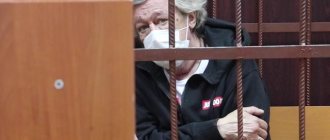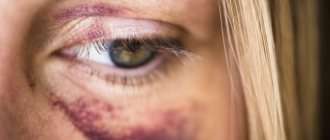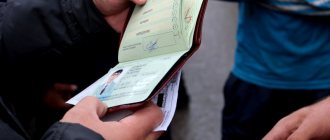Bringing to criminal liability under Article 264 of the Criminal Code of the Russian Federation
Section IX of the Criminal Code of the Russian Federation dated June 13, 1996 No. 63-FZ (hereinafter referred to as the Criminal Code of the Russian Federation) is devoted to responsibility for committing crimes against public safety and public order.
In particular, Article 264 of the Criminal Code of the Russian Federation establishes liability for violation of traffic rules and operation of vehicles (hereinafter referred to as vehicles).
The object of the crime is the safety of traffic and operation of the vehicle, the additional object is human life and health.
The subject of the crime are cars, trams, tractors and self-propelled vehicles, which are united by the concept of “mechanical means”, i.e. Vehicles driven by an engine.
Mopeds, i.e. two- or three-wheeled mechanical vehicles, the maximum design speed of which does not exceed 50 km/h, having an internal combustion engine with a displacement not exceeding 50 cubic meters. cm, or an electric motor with a rated maximum power in a continuous load mode of more than 0.25 kW and less than 4 kW, quadricycles with similar characteristics are among the objects of the crime provided for in Art. 264 of the Criminal Code of the Russian Federation do not apply. Bicycles that have an electric motor with a rated maximum power in continuous load mode not exceeding 0.25 kW, which automatically turns off at a speed of more than 25 km/h, are not classified as mechanical vehicles and are also not the subject of this crime.
The objective side of the crime includes violation of the Road Traffic Rules (hereinafter referred to as traffic rules) and (or) vehicle operation.
Violation of traffic rules can be expressed in driving through a prohibiting signal, failure to comply with the speed limit, driving into the oncoming lane, etc.
Violation of the rules for operating a vehicle can be expressed in parking the vehicle in the wrong place, operating a technically faulty vehicle, etc.
A mandatory feature of a crime is the occurrence of socially dangerous consequences due to negligence: grave harm to human health (parts 1 and 2), death of a person (parts 3 and 4), death of two or more persons (parts 5 and 6). In this case, it is necessary to establish a cause-and-effect relationship between violation of traffic rules and (or) vehicle operation and the socially dangerous consequences that occur.
The corpus delicti constitutes only such violation of traffic rules, which led to an emergency situation, the development of which led to the occurrence of an accident.
The subject of the crime is special. To incur criminal liability under Art. 264 of the Criminal Code of the Russian Federation, a person must have reached 16 years of age, and a violation of traffic rules must be committed while driving a car or other mechanical vehicle.
The subjective side of the crime is characterized by the presence of a careless form of guilt.
A crime committed through negligence is an act committed through frivolity or negligence.
A crime is considered to be committed due to frivolity if a person foresaw the possibility of socially dangerous consequences of his actions (inaction), but without sufficient grounds, he arrogantly hoped to prevent these consequences.
A crime is considered committed through negligence if a person did not foresee the possibility of socially dangerous consequences of his actions (inaction), although with the necessary care and forethought he should and could have foreseen these consequences.
Part 1 art. 264 of the Criminal Code of the Russian Federation establishes liability for violation by a person driving a car, tram or other mechanical vehicle of traffic rules or operation of vehicles, which, through negligence, resulted in the infliction of serious harm to human health.
Harm caused to human health is understood as a violation of the anatomical integrity and physiological function of human organs and tissues as a result of exposure to physical, chemical, biological and mental environmental factors.
Harm caused to human health is determined depending on the degree of its severity (serious harm, moderate harm and light harm) on the basis of qualifying criteria and in accordance with medical criteria for determining the severity of harm caused to human health, approved by the Ministry of Health and Social Development of the Russian Federation Federation.
The qualifying signs of serious harm caused to human health are:
causing harm dangerous to human life;
loss of vision, speech, hearing or any organ or loss of organ functions;
abortion;
mental disorder;
drug addiction or substance abuse;
permanent facial disfigurement;
significant permanent loss of general ability to work by at least one third;
complete loss of professional ability to work;
In accordance with Part 1 of Art. 264 of the Criminal Code of the Russian Federation, violation of traffic rules or operation of vehicles by a person driving a car, tram or other mechanical vehicle, which through negligence resulted in the infliction of serious harm to human health, is punishable:
— restriction of freedom for up to three years;
- or forced labor for a period of up to two years with or without deprivation of the right to hold certain positions or engage in certain activities for a period of up to three years;
- or arrest for up to six months;
- or imprisonment for a term of up to two years with or without deprivation of the right to hold certain positions or engage in certain activities for a term of up to three years.
The Criminal Code of the Russian Federation provides for tougher criminal liability if:
- the violation was committed by a person in a state of intoxication, resulting in negligence causing serious harm to human health (Part 2 of Article 264 of the Criminal Code of the Russian Federation);
— the violation resulted in the death of a person through negligence (Part 3 of Article 264 of the Criminal Code of the Russian Federation);
- the violation was committed by a person in a state of intoxication, resulting in the death of a person through negligence (Part 4 of Article 264 of the Criminal Code of the Russian Federation)
— the violation resulted, through negligence, in the death of two or more persons (Part 5 of Article 264 of the Criminal Code of the Russian Federation).
- the violation was committed by a person in a state of intoxication, resulting in the death of two or more persons through negligence (Part 6 of Article 264 of the Criminal Code of the Russian Federation).
According to the Federal State Statistics Service, in 2017, 21 thousand crimes were registered for violations of traffic rules and operation of vehicles (for comparison, in 2016 - 22 thousand crimes). It should be noted that in the first half of 2022, the number of registered crimes for violations of traffic rules and operation of vehicles amounted to 9.7 thousand.
Be careful on the roads, do not violate the traffic rules!
Hit a pedestrian at a crossing, sidewalk or on a turn, the driver is to blame - fines and deprivation of license
The most common and, perhaps, deplorable situation for motorists is a collision with a pedestrian in a zebra crossing zone. In this case, the pedestrian road user is right, and the driver is guilty in almost all cases. In this case, the driver is charged with violating the following points:
- 14.1 Traffic rules, if the collision occurred at an unregulated pedestrian crossing,
- 14.2 of the Rules, if the collision occurred in a zebra crossing zone regulated by a traffic light,
- in addition to one of the above, they may be charged with 10.1 traffic rules - a “universal” clause that fits many situations, requiring you to choose a speed in order to anticipate the danger and avoid it.
The penalties in this case depend on a large number of factors. Let's list them all.
If the pedestrian escaped with fright, but there was no collision
Then the driver is entitled to one single punishment - a fine of 1.5 to 2.5 thousand rubles under Article 12.18 of the Code of Administrative Offenses for not allowing a pedestrian to pass at the crossing. This fine can also be issued on camera and is applied for failure to give way to pedestrian road users.
What are the criminal penalties for intentional accidents?
We looked at them in the table above. And these include those articles that do not directly imply intentional harm to health specifically in an accident. We are talking about the general norms of the Criminal Code of the Russian Federation:
- Article 105 – murder,
- Article 115 – intentional minor harm to health,
- Article 112 – intentional harm of medium gravity,
- Article 111 – intentional minor harm.
Moreover, if such harm was caused through negligence, then the culprit of such an accident will be punished under Article 12.24 of the Code of Administrative Offenses of the Russian Federation. But if it is proven that the driver deliberately committed the collision with evil intentions, then he will face criminal liability.
Important note!
If there is no harm to health, but there is property damage
Then there is civil liability. For example, if a pedestrian fell and got dirty as a result, you hit his dog (pets are considered property under the Civil Code of the Russian Federation).
In this case, the damage will need to be compensated according to the victim’s expenses for restoring his property (the same clothes) to its original condition.
If a pedestrian is slightly harmed
Then there is a risk of deprivation of rights under Part 1 of Article 12.24 of the Administrative Code. But this norm does not imply an unconditional deprivation of the right to drive. The driver may be assigned, at his choice, a person reviewing the case:
- a fine of 2,500 to 5,000 rubles for hitting a pedestrian causing minor damage to health,
- deprivation of rights for 1-1.5 years.
This is an administrative liability, and it does not cancel the civil liability - compensation for the costs of restoring health and property damaged as a result of a hit-and-run accident.
Please note that in this article, minor harm means minor loss of health or minor loss of ability to work. The 2022 legislation does not specify what.
If moderate harm to health is caused
By average damage, legislators already understand loss of health for a long time, but without risk to life, or loss of ability to work by at least a third.
And for such harm to a pedestrian who is hit, the driver faces either a fine of 10 to 25 thousand rubles, or deprivation of his license for 1.5-2 years.
If the driver was drunk
Then, according to administrative law, unlike criminal law, he will simply be given another punishment - deprivation of rights for drunkenness (Article 12.8 or 12.26 of the Administrative Code - the latter, if he refused a medical examination).
What to do if you hit a person
What to do if you hit a person to minimize the possible consequences? It is imperative to follow traffic rules that regulate the sequence of actions in case of accidents with victims:
- immediately after the accident, it is necessary to provide first aid to the victim and immediately call medical personnel;
- if the arrival of doctors is impossible, it is allowed to leave the scene of the accident and take the victim to the nearest hospital (after this it is necessary to return to the scene of the accident and record all the circumstances of the collision);
- it is necessary to call the traffic police officers to draw up procedural documents (in case of an accident with victims, the Euro Protocol rule does not apply, so you cannot fill out the road accident documents yourself);
- you need to exercise your right to call a lawyer, after which all procedural actions will be carried out with his participation;
- it is necessary to check the correctness of filling out the procedural forms, independently record all the evidence - record the data of eyewitnesses, save the DVR recordings, take photographs from different angles, etc.
If you hit a person with a car with serious consequences or death of the victim, an article of the Criminal Code of the Russian Federation allows for the imposition of a real prison sentence. Self-defense in this case is unlikely to achieve a positive result. You need to follow the advice and recommendation of a lawyer to get a chance to be released from punishment.
Hit a pedestrian in a place not allowed for crossing or due to the pedestrian’s fault
In this case, everything becomes more complicated for the pedestrian in terms of liability, and the hit pedestrian still has legal rights. But, alas, responsibility will not be completely removed from the driver, even without his fault in the accident.
And, if everything is clear for a pedestrian: he violated traffic rules - pay for damage to the car, then what is the matter with the driver, why should he be punished without being guilty?!
The answer to this question is given by Article 1079 of the Civil Code of Russia. It is he who defines the vehicle as a vehicle of increased danger, and the driver as the owner of a source of increased danger (IPO). But most importantly, the Civil Code of the Russian Federation regulates that the operator of an IPO, regardless of guilt in an accident, must compensate for the damage caused by such a source.
There are two exceptions to this obligation in our case:
- when a pedestrian deliberately jumped under the wheels (and this still needs to be proven),
- when the collision occurred under the influence of force majeure.
Thus, the following drivers are recognized as owners of IPO:
- cars in a collision with pedestrians or cyclists,
- even bicycle drivers in accidents with pedestrians.
As a consequence of this established practice of legislation in 2022, we find that if a pedestrian is at fault in an accident involving a car and a pedestrian, then, regardless of the outcome and consequences for both participants, the pedestrian pays for the restoration of the car, and the driver pays for the harm caused to the pedestrian (even in absence of the driver’s fault)… However, the damage to the pedestrian is paid for by the motorist’s insurance under MTPL, if he has valid insurance.
Most often, accidents involving a collision with a pedestrian due to the latter’s fault occur:
- on a country road,
- on long highways,
- in places of heavy pedestrian traffic, where some representatives of this category of road users are simply too lazy to reach the pedestrian crossing.
Another unpleasant surprise in the legislation of 2022 - if suddenly a driver hits a pedestrian and flees the scene of an accident when the pedestrian is at fault, then the owner of the car will be responsible, because Article 1079 of the Civil Code refers to the owners of vehicles as sources of IPO. Of course, this is provided that the escaped driver is not identified, and the car itself is known by license plates. But even in this case, the damage to the pedestrian is covered by the car owner’s compulsory motor liability insurance.
Can the traffic police confiscate a car?
No.
Confiscation of a criminal's property is a separate procedure clearly described by law. It is also described in what cases such property can be confiscated. And these cases are listed in Article 104.1 of the Criminal Code of the Russian Federation. There are no articles 264, 264.1 and others listed in our material, which are the basis for this.
In addition, even in order to compensate for damage to victims, they cannot confiscate a car within the meaning of Article 104.3 of the Criminal Code. However, keep in mind that in the case of a civil case for compensation of a particular damage, if there is nothing to take from the culprit in a simple way, then the car can be taken away and sold in order to compensate for the damage. But this is done purely by court decision and by bailiffs.







